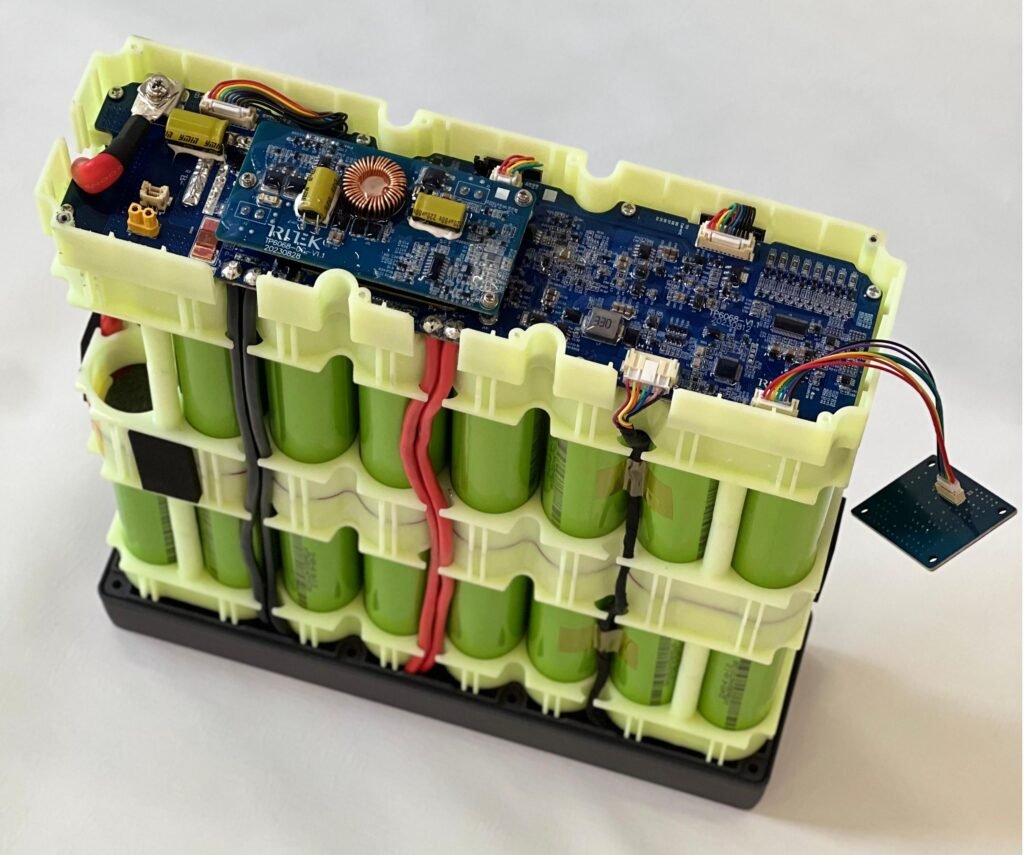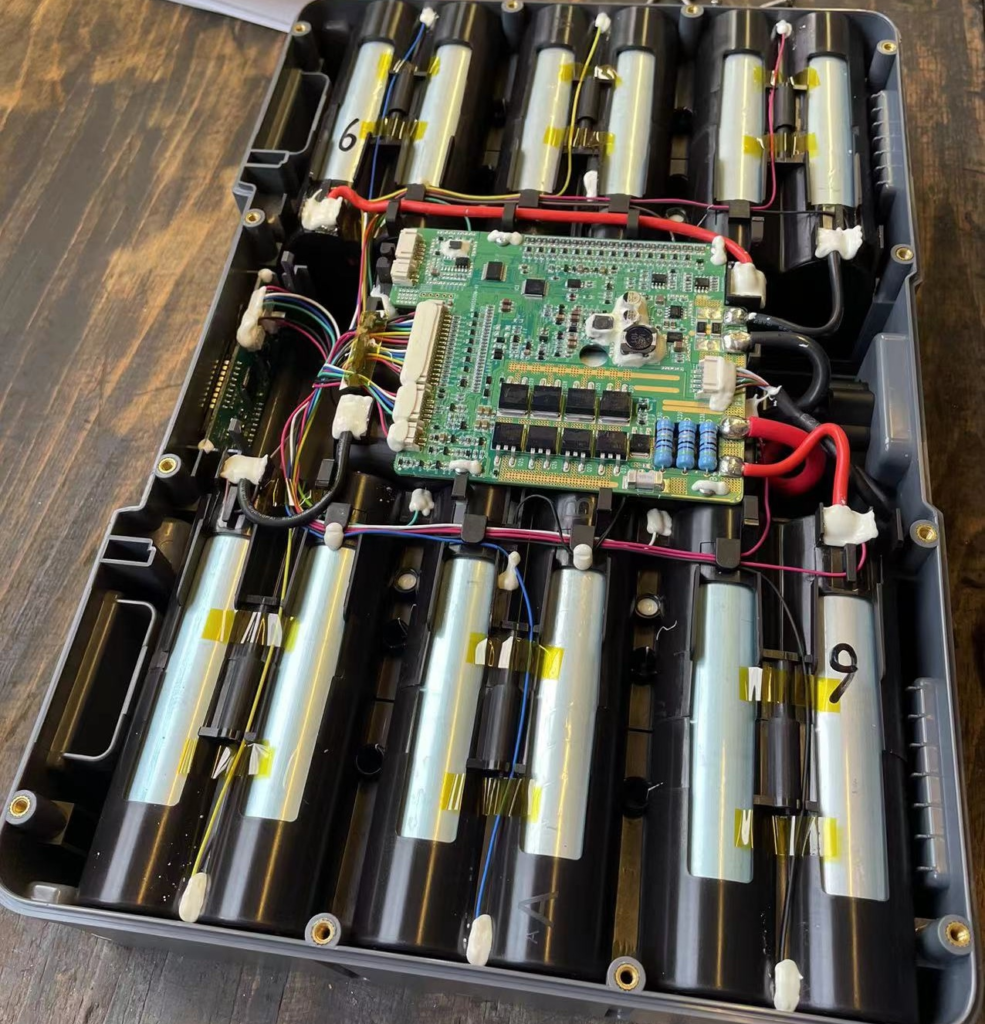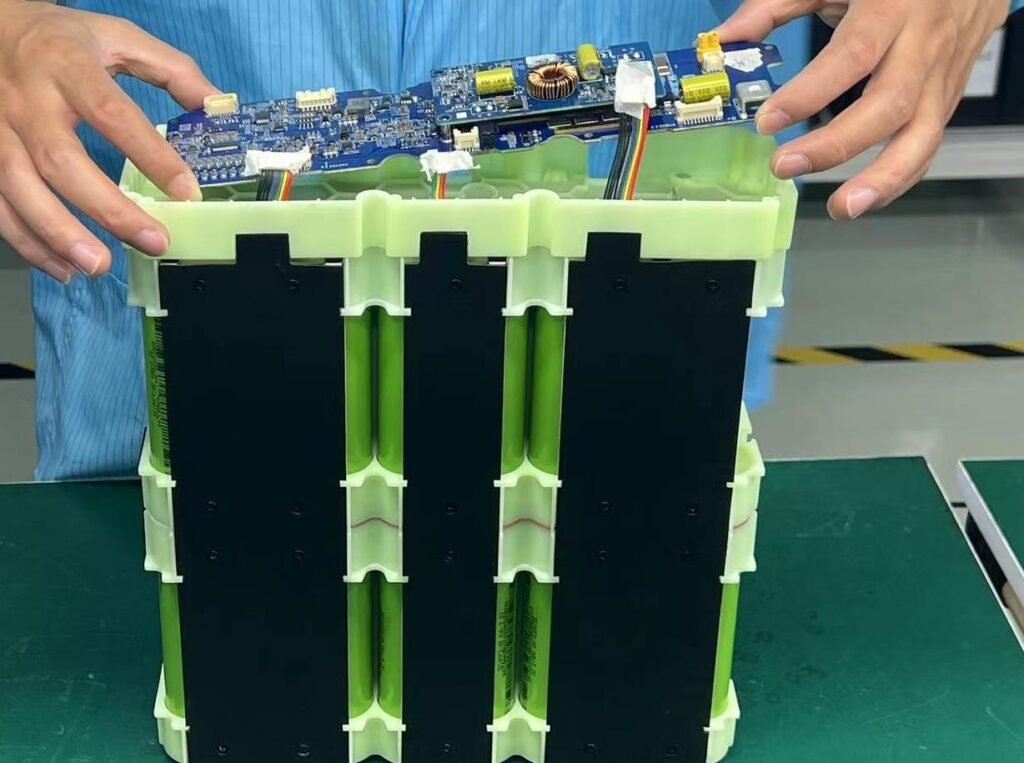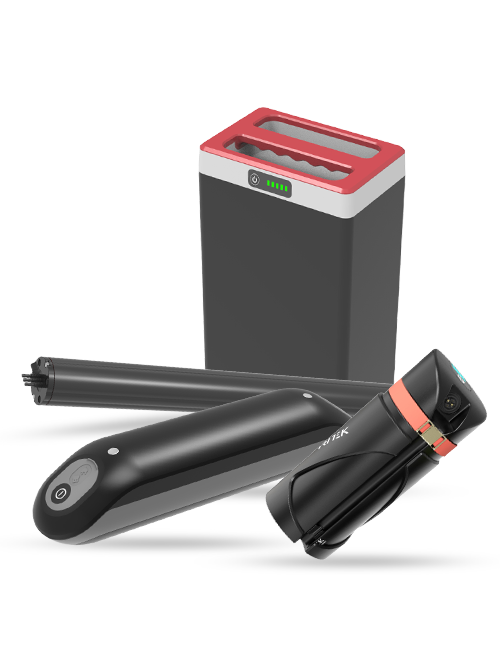In battery pack design and electrical engineering, one of the most critical decisions is how to connect the cells together: Battery Busbar vs Traditional Cable is the key comparison. Whether you’re building an EV battery, an energy storage system (ESS), or a light electric vehicle (LEV) battery, your choice of connection method will directly impact the pack’s performance, safety, and cost.
Battery busbars are quickly replacing traditional cables in modern battery packs due to better current handling, heat management, and long-term reliability. But is a busbar always the better option? In this article, we’ll break down the differences between bus bars and cables, helping you choose the right solution for your battery system.
What Is a Battery Busbar?

Battery busbars are rigid, solid metal strips, usually made of copper or aluminum, designed to handle high currents with minimal resistance. They are commonly used in applications requiring efficient power distribution and heat dissipation.
- Material: Copper (for higher conductivity) or aluminum (for lighter weight)
- Shape: Flat plates, laminated layers, or flexible custom shapes
- Connection Method: Laser welding, ultrasonic welding, or bolted joints
Key Characteristics
- High current carrying capacity: Can handle significantly higher currents than traditional cables due to their larger cross-sectional area.
- Low Resistance: Minimizes electrical power loss and voltage drop, ensuring consistent performance.
- Heat Dissipation: Larger surface area, often enhanced with fins, allows for better heat management, reducing overheating risks.
Applications
- Electric Vehicles (EVs): Connect battery cells and modules to ensure efficient power distribution.
- Renewable Energy Systems: Used in large solar battery banks and inverters for high-current connections.
- Industrial Machinery: Employed in high-power systems requiring robust and reliable connections.
Busbars are particularly valuable in complex electrical systems where space efficiency and long-term reliability are critical. Their rigid design ensures consistent performance under high loads, making them a preferred choice in modern high-power applications.
What Is Traditional Battery Cabling?

Traditional cabling refers to using insulated wires or cables to interconnect battery cells or modules. This approach has been used for decades, especially in small-scale or low-current systems.
- Material: Copper wire with insulation
- Connection Method: Crimping, soldering, or bolted lugs
- Structure: Wire harnesses, cable trays, or bundled connections
Key Characteristics
- Flexibility: Allows for easy routing in confined spaces, ideal for irregular or mobile layouts.
- Cost: Generally cheaper upfront compared to busbars, making them attractive for budget-conscious projects.
- Maintenance: May require more frequent checks due to potential wear, tear, or overheating risks.
Applications
- Automotive and Marine: Used in vehicles and boats where flexibility is needed for moving parts or tight spaces.
- Small-Scale Backup Systems: Common in home backup power setups or small solar systems.
- Temporary Installations: Ideal for short-term setups like construction sites or events.
Traditional cables are widely used in scenarios where the system is not stationary or where high current capacity is not a primary concern. However, their flexibility comes with trade-offs, such as higher resistance and less efficient heat dissipation, which can impact performance in high-power applications.
Battery Busbar vs Cable: Quick Comparison Table
Feature | Battery Busbar Systems | Traditional Cable Systems |
|---|---|---|
Current Handling | Higher (wider surface area) | Limited by wire gauge |
Space Efficiency | More compact and organized | Bulky, especially in large packs |
Heat Management | Better heat dissipation | Prone to localized heating |
Resistance & Loss | Lower electrical resistance | Higher resistance over length |
Assembly Speed | Faster in mass production | Slower, labor-intensive |
Initial Cost | Higher (materials + tooling) | Lower upfront cost |
Maintenance & Reliability | Fewer failure points | More prone to connection failures |
Customization | Highly customizable | Limited by wire flexibility |
Weight (in large packs) | Lighter overall | Heavier with many cables |
Cost | Higher initial cost, lower long-term costs due to efficiency and durability. | Higher initial cost, lower long-term costs due to efficiency and durability. |
Why Choose a Busbar for Battery Packs?
Handles Higher Current
Busbars can carry more current without overheating due to their larger surface area and optimized shape. This is crucial for EV fast charging or high-discharge scenarios like electric trucks.
Reduces Power Loss
Lower electrical resistance means less electrical energy wasted as heat, improving battery efficiency and extending range.
Enhances Thermal Management
Busbars naturally act as heat sinks, helping manage temperature distribution within the pack. This reduces the risk of thermal runaway, a major concern in lithium-ion batteries.
At Tritek, battery packs are designed with advanced busbar systems that enhance thermal management, ensuring safer and more stable performance even under high discharge or rapid charging conditions.
Supports Automated Manufacturing
Busbars are compatible with laser welding and other automated processes, reducing manual labor and increasing production consistency, especially important for mass production of EV batteries.
Tritek integrates automated busbar welding and assembly lines, enabling large-scale production with higher precision, lower defect rates, and faster lead times.
Cleaner, Safer Design
With fewer wires and connectors, busbars offer a cleaner and safer battery design. There’s less chance of insulation wear, wire tangling, or connection failures, lowering the risk of short circuits compared to multiple cable joints.
When Should You Use a Battery Busbar?
Consider using busbars if you’re building:
- Large battery packs for EVs, trucks, or buses
- High-capacity energy storage systems (ESS)
- Battery systems requiring fast charging or high discharge rates
- Compact or modular designs where space and neatness matter
- Applications demanding consistent mass production
When Are Traditional Cables Still Suitable?
Cables are still useful in certain cases:
- Small battery packs with low current demands (e.g., e-bikes, power tools)
- Prototype or low-volume production where tooling cost is not justified
- Applications requiring flexible connections in dynamic or vibrating environments
- Cost-sensitive projects with minimal space constraints
Manufacturing Considerations: Automation vs Manual Labor
Busbar:
- Designed for robotic welding and automation
- Reduces assembly errors
- Supports scalability for large production runs
Cable:
- Requires manual assembly (crimping, soldering)
- Higher labor cost per unit
- More variable quality depending on assembly skill
Why Tritek Chooses Busbar Solutions for Battery Packs

At Tritek, most battery packs—whether for EVs, e-bikes, or energy storage systems—are built using busbar technology. This approach allows us to deliver:
- Higher current capacity and safety
- Better thermal management to prevent overheating
- Compact and modular designs for space-limited applications
- Automated manufacturing for consistency and faster delivery
With over 15 years of experience in battery design and manufacturing, Tritek provides customized battery solutions that balance performance, safety, and cost-efficiency.
Conclusion: Which Is Better for Your Battery Pack?
Busbars offer superior performance for high-current, high-efficiency battery packs, particularly in EVs, energy storage, and industrial systems. They reduce heat, minimize resistance, and support automation—making them the go-to choice for large-scale or high-power applications.
However, traditional cables are still relevant for small battery packs, prototypes, or flexible applications where cost is the primary concern.
Choose based on your project size, performance requirements, and production method.



